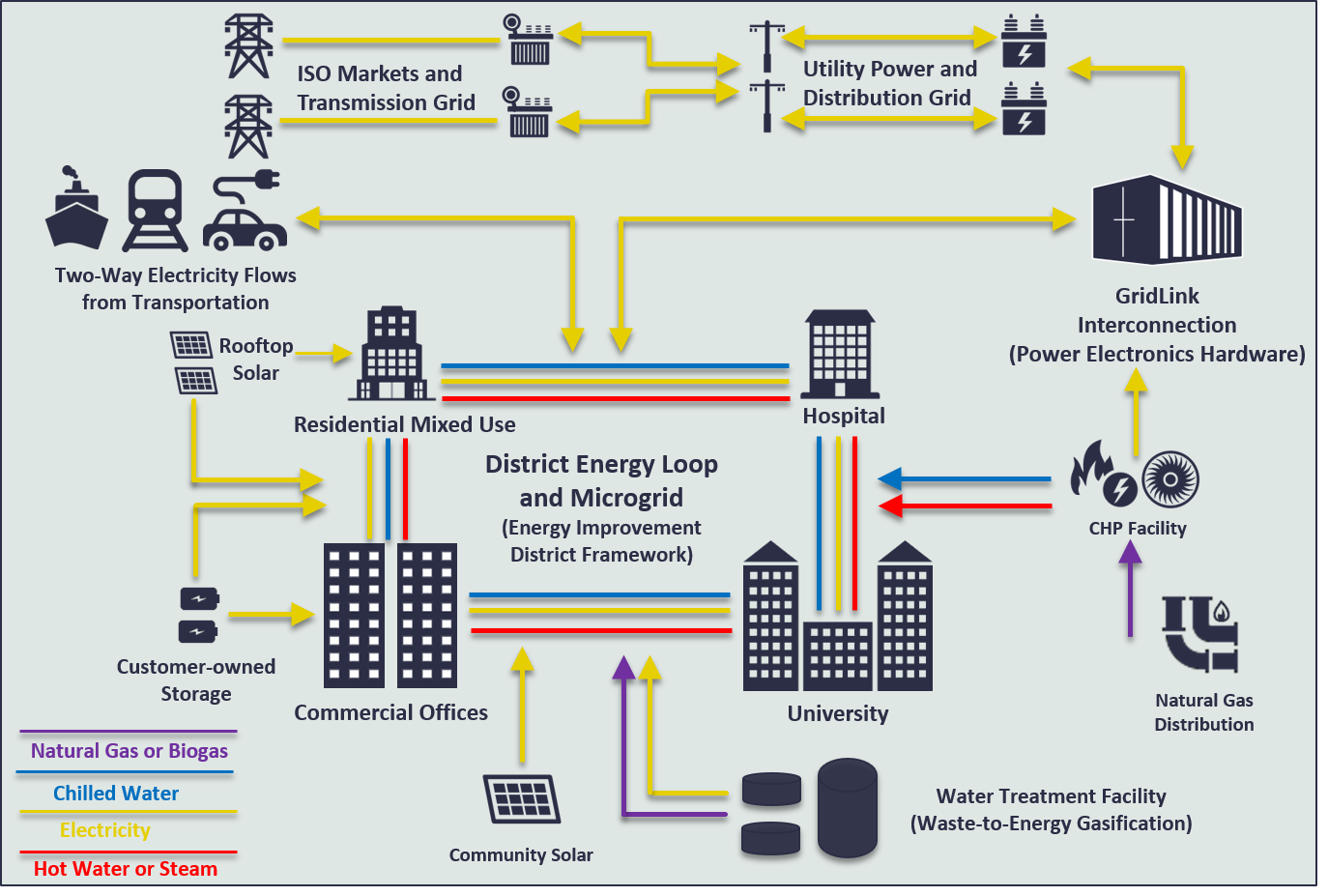In collaboration with several US mayors and governors, Pareto Energy has developed a microgrid organizational, governance and financing framework known as the Energy Improvement District (“EID”). The EID provides communities legal guidance for integrating community energy systems with the utility grid in order to maximize returns, drive efficiency and increase community reliability.

The graphic above illustrates an EID that combines community energy assets with customer-owned assets to create an integrated community energy system. In this example EID, users determined that the creation of a district energy loop was the most effective and efficient method of integrating the available energy assets. Moreover, diversity of load profiles among the EID participants enabled a higher utilization of the existing energy assets, thereby increasing their efficiency and lowering costs for all users. Finally, due the architecture of the energy system with the GridLink interconnection platform, the entire EID can aggregate its generation assets to sell into wholesale energy markets. This aggregation has the potential to significantly increase the earnings to both the EID and its individual users.